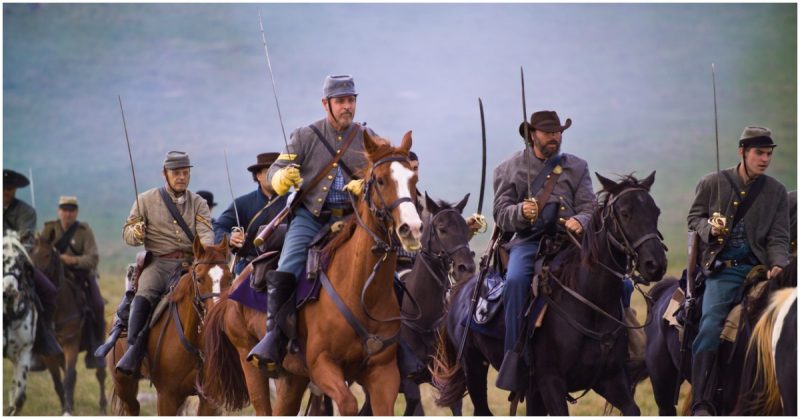War History Online presents this Guest Article from by Martin Fejfar
The term friendly fire became widely used during and after WWI although it had previously taken its toll in military engagements in the centuries before then. Friend or foe identification mistakes, human judgment errors, the weather, and nature, all contributed to the cause of friendly fire incidents or “fratricide” in conflicts of the past.
Battle of Barnet
The Battle of Barnet took place near the small town of Barnet, north of London in 1471. It was perhaps one of the most important battles in the War of the Roses, a conflict between the House of York and the House of Lancaster for control of the throne of England. Edward IV and the House of York won the battle which began early on a very misty morning on April 14.
Following cannon fire and flights of arrows, they attacked each other with polearms. The right wing of the Lancaster force led by the Earl of Oxford outflanked and crushed York’s left wing and then chased them back to the town of Barnet. The Earl of Oxford stopped the chase, rallied his men and led them back to the battlefield.
Due to the foggy weather, the soldiers at the center of the Lancastrian army mistook Oxford’s “star with rays” badge for the Yorkist “sun in splendor” and unleashed a volley of arrows onto their allies. Oxford’s men cried treachery, a pretty common thing in those times, and withdrew from the battle. Shouts of betrayal spread quickly through the Lancastrian lines, undermining their morale and bringing panic and confusion to their ranks. The battle was lost.
Battle of Germantown
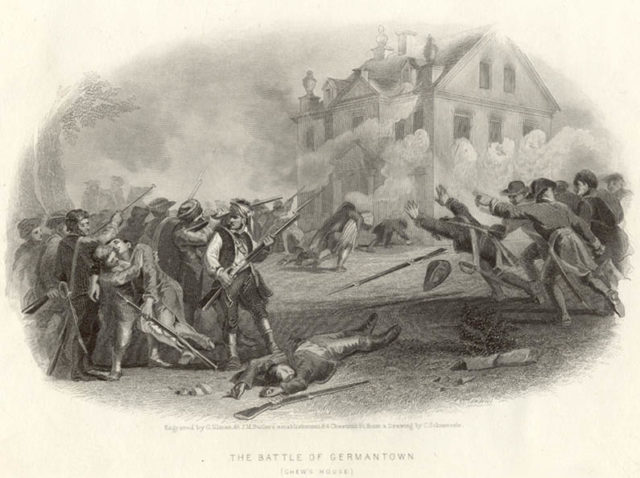
One of the major engagements during the American revolutionary war was the Philadelphia campaign. The British had seized Philadelphia, the US capital and the vast number of their forces were encamped just outside the city at Germantown. The Continental Army led by George Washington was aiming to defeat the British with a surprise attack.
For the offensive, Washington planned to use four separate columns of men which would converge on the British. The American forces consisted of 3,000 militias, and the remaining 8,000 were regular troops. Coordination problems and a foggy morning, however, played into British hands.
On October 4, 1777, the attack began. At first, the Americans were successful. Then, cut off from the main force, 120 British soldiers barricaded themselves into a fortified stone house presenting strong resistance against any attempts of capture and inflicting heavy American casualties. Washington would not allow his men to proceed until the position was taken.
Due to the fog, and the smoke from cannon and musket fire, one of the advancing American columns attacked the flanks of the American center unit mistaking them for redcoats. Shaken by the attack and low on ammo; they fell back. The British immediately took advantage of the reversal of fortune, pressed forward and eventually won the battle.
Death of Robert Pierrepont, 1st Earl of Kingston-upon-Hull

When the English civil war broke out between Parliament and the King in 1642, Robert Pierrepont, Earl of Kingston-upon-Hull, remained neutral.
“When….I take arms with the King against Parliament, or with the Parliament against the King, let a cannonball divide me between them!“
However, over time, he became a supporter of the King and even became Lieutenant General of his royalist armies. Parliamentary forces eventually captured Pierrepont. While he was being transported on a boat, Royalist forces fired upon his captors from the banks of the River Trent, accidentally killing him. Oddly enough, the Earl was indeed killed by a cannon ball.
Battle of Algeciras Bay
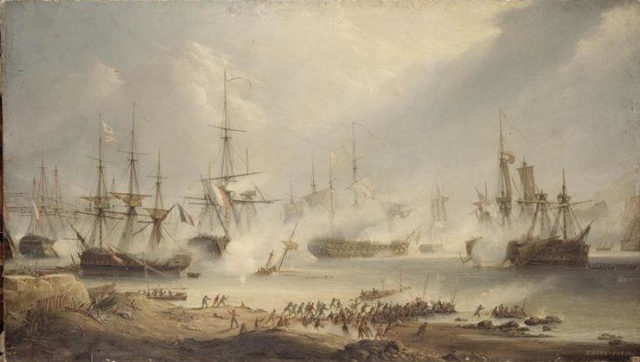
At night on July 12, 1801, during the French Revolutionary War, the Spanish ship the Real Carlos was heavily damaged and set on fire by the British ship HMS Superb. The Spanish and French were allies, and their Navies were heading to the port of Cadiz. To get there, they had to get past the British Navy base at Gibraltar.
The French and Spanish fleet sailed from Algeciras, and the British force attacked them. HMS Superb cut deep into the disarray of the Spanish and French rearguard and struck the Real Carlos, setting it on fire.
The Real Carlos then encountered its allied ship the San Hermenegildo, but in the darkness and disorganization, they opened fire on each other. In confusion, two massive 112 gun Spanish ships collided into each other, catching fire. They exploded killing more than 1700 men.
The rest of the Spanish and French ships reached Cadiz successfully. However, the battle proved the British held naval control of the Mediterranean, resulting in the defeat of the French Army in Napoleon’s Egyptian campaign.
Battle of the Monongahela
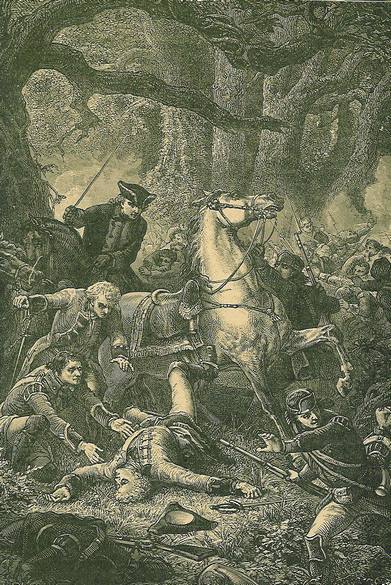
On July 9, 1755, during the French and Indian War, a British and Colonial force was moving to take Fort Duquesne (today Braddock, Pennsylvania) from French control. A bigger British force was caught off guard by the French and Indian tribes on a narrow road, in the woods. The British were unused to fighting among trees. Unable to utilize their usual tactics and surprised by the attack, they became confused, and several platoons fired at each other. The main French force pushed the British from the front, while Indians and Canadian militia were furiously attacking from the sides, under cover of the forest.
General Braddock, Commander of the British force and his officers, tried to rally their men to order. Several horses were shot from under him until he was eventually shot in the chest – possibly by one of his own soldiers.
George Washington who became the first president of the United States in 1789, was also on the battlefield that day (on the British side) as a young colonel. Fortune was with him, as he described in a letter to his mother:
“I luckily escaped without a wound, though I had four bullets through my coat, and two horses shot under me.”
Battle of Waterloo
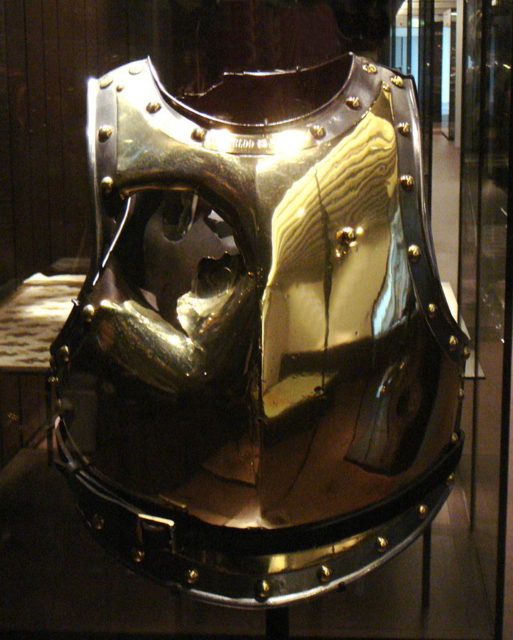
During perhaps one of the most famous battles of all time, the Battle of Waterloo, friendly fire also took its toll. Napoleon escaped his imprisonment on Elba island, set foot back on French soil and became French Emperor again without a single drop of blood spilled. Neighboring countries who had tasted French occupation before quickly prepared their armies to counter Napoleon’s threat. Joint forces from Prussia and Britain and some of the other allies met to do battle with Napoleon near Waterloo on June 18, 1815.
In the early stage of the fight, the over enthusiastic Prussian artillery wrongly fired on a group of British horse artillery. The British returned fire and both forces engaged in a short artillery battle between allies. A cease-fire was negotiated when a Prussian commander rode to the British position and explained the mistake.
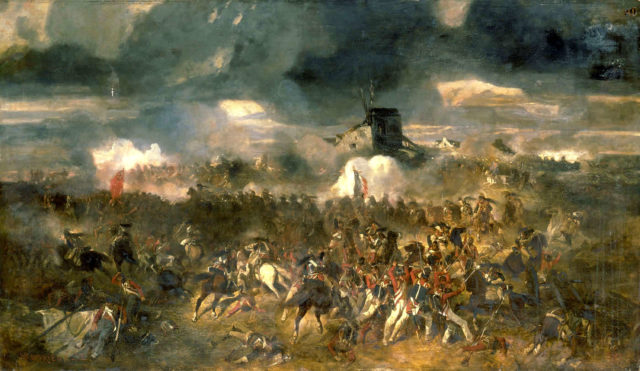
However, the incident did not change the result of the battle. Napoleon was delivered a final blow at Waterloo which ended his devastating campaigns in Europe once and for all.
USS Peterhoff
USS Peterhoff was a Union navy ship during the American Civil War. It was originally built for the Tsar of Russia but was eventually acquired by British interests. The ship was used mainly as a cargo ship until it was captured from its British owners on its voyage to the US in 1863 by the Union Navy. It was later sent to aid in the naval blockade against the Confederacy of Southern States in Wilmington, North Carolina.
On the morning of March 6, 1864, it was rammed and sunk by the Union gunboat Monticello, who had mistaken it for an enemy blockade runner. Luckily all the crew survived, and the wreck was salvaged. Later it was destroyed to ensure the Confederates could not recover anything useful from it.
Battle of Guildford Court House
The Battle of Guildford Court House was fought on March 15, 1781, during the American Revolutionary War.
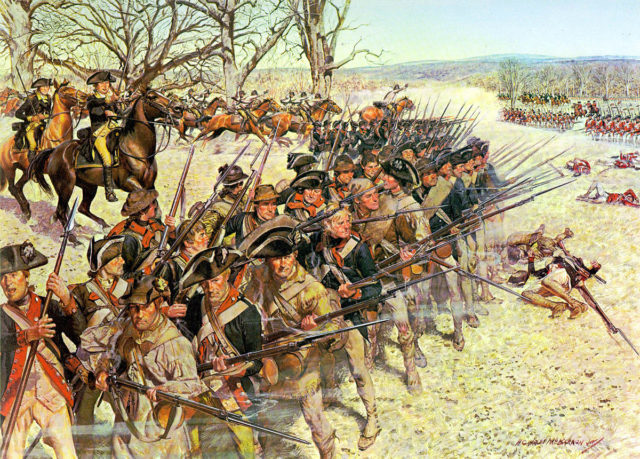
The United States force was twice as large as the British. Nonetheless, the Commander of the British, Lord Cornwallis decided to fight. In spite of heavy losses, during the early stages of the battle, the British seemed to be gaining ground. However, they encountered a large US force hidden around the Court House. The British launched an immediate and furious attack and pursued their enemy into the woods where they were eventually repulsed by a unit of light dragoons.
Meantime, two three-pounder British guns had arrived on the battlefield, and they were immediately ordered to fire on the American forces. Their barrage did not hit many US soldiers. Instead, numerous British troops were wounded or killed. The American troops then fled the battlefield. It resulted in a costly British victory, with almost a quarter of their men lost.
The situation inspired some of the events depicted during the last battle in Mel Gibson’s movie “The Patriot.”
Death of Stonewall Jackson
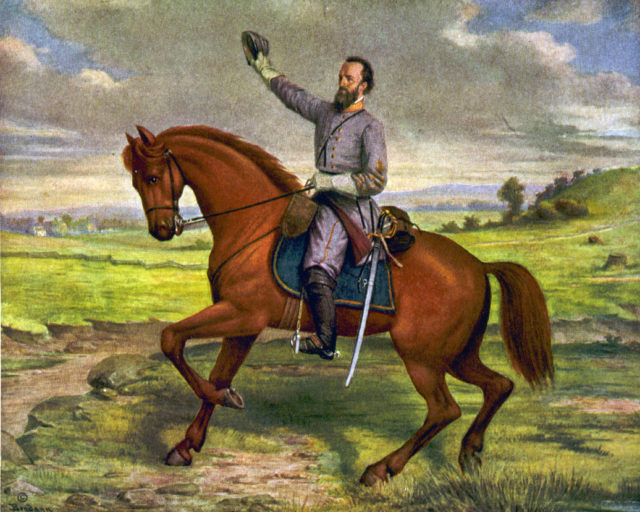
Thomas Jonathan “Stonewall” Jackson was the second most celebrated Confederate General, after General Robert E. Lee. As a hero of the Confederacy, his death was a significant blow to the Confederate cause with the loss of his great military capability and the morale of the southern forces and the general public.
The Battle of Chancellorsville had been a huge success. Stonewall Jackson and his soldiers had performed perhaps the most dramatic flanking maneuver of the war in which they had completely routed an enemy unit. Returning to their camp after the battle, he and his men were mistaken for a Union Cavalry force. Men from their own 18th North Carolina Infantry regiment shouted, “Halt who goes there?” but failed to wait for a response and fired on the incoming riders.
Three bullets hit Stonewall Jackson. As a result, his left arm was amputated, but he died eight days later of pneumonia on May 10, 1863. His last words on his deathbed were:
“It is the Lord’s Day; my wish is fulfilled. I have always desired to die on a Sunday.”
Battle of Karánsebes
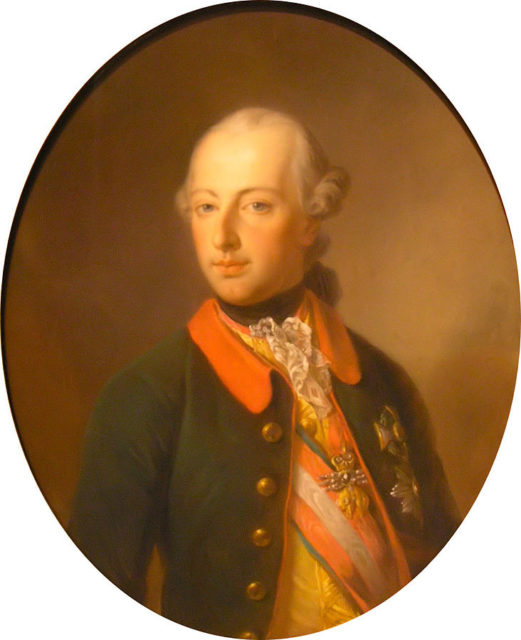
Perhaps the most embarrassing friendly fire incident in history took place at the Battle of Karánsebes during the Austro-Turkish War. The Habsburg Empire force of approximately 100,000 men was setting up camp near the town Karánsebes (modern Romania). They were composed of soldiers from many nationalities and minorities and did not have a common language.
On September 21/22, 1788 a group of hussars crossed the Timis River scouting for Turks. Instead, they found some alcohol and became drunk. When some infantrymen caught up with them and discovered the booze they wanted some, but the hussars refused. An argument broke out, and a Wallachian soldier became startled and fired his rifle.
Immediately the hussars and infantry attacked one another. In the darkness and unable to understand each other the fighting spread. Chaos broke out in the camp. Soldiers in confusion and fear, thinking the Ottomans were attacking, fired at their fellow Habsburg soldiers. A Commander believing it was a cavalry charge by the Turks, ordered the artillery to fire. Part of the force became dispersed losing tents, cannons, wagons and other provisions. Holy Roman Emperor Joseph II was knocked off his horse into a creek. The whole army retreated from an imaginary enemy.
Order was eventually restored. Two days later the Ottoman Army arrived and discovered the dead and wounded soldiers. In spite of the embarrassing episode, the Austrians were able to regroup and continued their campaign.
By Martin Fejfar
